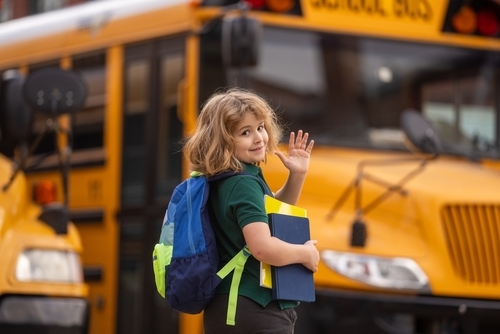Today, there are probably more pay per click marketplaces that aren’t search based than are. One of our favorite examples is Plenty of Fish. As a dating site, it probably never would have thought of itself as a potential per click marketplace. But, today, instead of being just an affiliate site where the majority of ads are handled internally, it’s just that. To advertise on Plenty of Fish is as easy as creating an account and spending money. That’s the dream and natural progression of almost any highly trafficked site that either has high vertical intent or can segment intent into keywords or categories. It comes as no surprise then that Facebook wound up building their own pay per click marketplace. It also was no surprise to those in the performance marketing community that Facebook’s platform has become a viable challenger to Google. For many, Facebook’s is the preferred place to spend their time and money. While it makes sense to talk about all the various self-service platforms from MySpace to Adblade, the two most meaningful are far and away Google and Facebook.
Conventional wisdom suggests that if you can succeed on one you can succeed on the other. It’s certainly true from what we’ve seen. The traits that allow a person to excel at self-service ad platforms carry over from one to the next, but there are platform specific nuances that can accelerate that success or hamper its realization. Google and Facebook may function similarly, and as a result we may tend to think of them more similar than they are. Their origins, though, are so different that it is only natural to discover some fundamentally significant differentiators. Paying attention to them is what separates the more sophisticated spenders from those just spending. In this case, one isn’t necessarily better. They are just different.
Intent vs. Demographic
It wasn’t easy being Google and building a better mousetrap. They did it, though, and unlike Friendster and Facebook to MySpace no one has dethroned Google in search. Much to the dismay of media buyers everywhere, Google never went for showing banners on its home page or results pages. It didn’t have to, Everyone knew that they would find a way to monetize in ways that traditional banners could not. Even if we couldn’t put our finger on it then, the word we know now to describe their success is intent. People are raising their hand and saying what they want. Google’s task was to profit from intent by selling that intent to advertisers in the form of keywords.
Facebook’s challenge is much more difficult in many respects. People use Facebook the way we might use email or Microsoft Word. They use it to achieve a task that has little correlation to commercial intent. Monetizing Facebook would always be and has proven to be fundamentally unlike Google because of the missing intent. If anything, Facebook shares more in common with traditional media buying. Advertisers target based on demographics. Being no dummies and ardent students of monetization, Facebook knows this. While, they probably didn’t devise the "like" button as a proxy for intent, they will quickly seize on it if it turns out to be that way. Until then, it’s about creating buckets based on demographics and for a smaller percentage of the population, interests. Regardless, ads will interrupt as opposed to accompany the experience.
Long tail vs. Hyper-targeting
Quite a few arbitragers have made healthy returns by realizing the power of the long-tail. The subject of a popular book and now common place among those who participate in search, Google made the long-tail relevant and viable. Prior to Google, Yahoo tried to consolidate the long-tail and drive traffic to the more expensive head terms. Content with allowing people to have broad portfolios of penny stocks and not just smaller ones of blue chip stocks, Google’s platform fostered a new industry.
The long-tail might seem like a version of hyper-targeting, and it is. If an advertiser wants to reach a very specific interest group they can. With Facebook, though, the long-tail takes on a new and completely different meaning. In Facebook, you can target an incredibly minute group, but what you are doing is creating tiny audience segments. You can, if you so choose, target people of a certain age, gender, with these specific interests (tv and sports, where you’ve ended up with an audience of less than 100 people. That’s a long-tail of sorts, but it’s a very different long-tail. With intent, you are generally targeting different people each time on the long-tail. They aren’t searching for the same thing time and again. With audience and demographics, you are hitting the same people again and again. Who they are doesn’t change, so if you do a long-tail on Facebook, you’re really just over-exposing an audience quite easily.
Passive vs. Active
Success on Google reminds me of the line made famous by direct marketing legend Ron Popeil when marketing his Showtime Rotisserie Oven. You, "Set it and Forget it." That was Ron’s line. Is it really that much different on Google? The hardest part about Google is getting going. It’s that combination of keywords in the ad group and ad groups in the campaign with the most important piece tying it all together – the CTR of the ads themselves. If you can get winners early on, the best advice is not fixing what isn’t broken. When you do, you risk upsetting the algorithm gods who might make your once successful campaigns no longer a success.
Facebook may not be that different, but where in the creative lifecycle you spend your time is. It’s paramount to figure out the right targeting, but targeting becomes a variable versus the one thing that must be figured out in advance. Chances are, you don’t actually know the right groups to target, so that piece becomes a work in progress. With Facebook, you also don’t want to fix what isn’t broken, but you find yourself spending a lot more time keeping things not broken. The audience targeting versus intent targeting means increased creative burnout and a constant need to refresh. It’s a much more active experience while campaigns are running as opposed to a largely frontloaded process. With Facebook, you can fail fast and often. You probably will.
Thinking back to a few years ago, the term pay per click almost exclusively belonged to the search industry. They may not have pioneered it, but they certainly popularized it. Even today, when a company, not in search, announces that it created a pay per click marketplace for advertisers, we will hear statements like, "So and so company now offers advertisers AdSense like capabilities." Given that the company doesn’t offer access to Google inventory, we can only surmise that the use of Adsense is meant to describe how advertisers interact with the system.
 Network
Network

